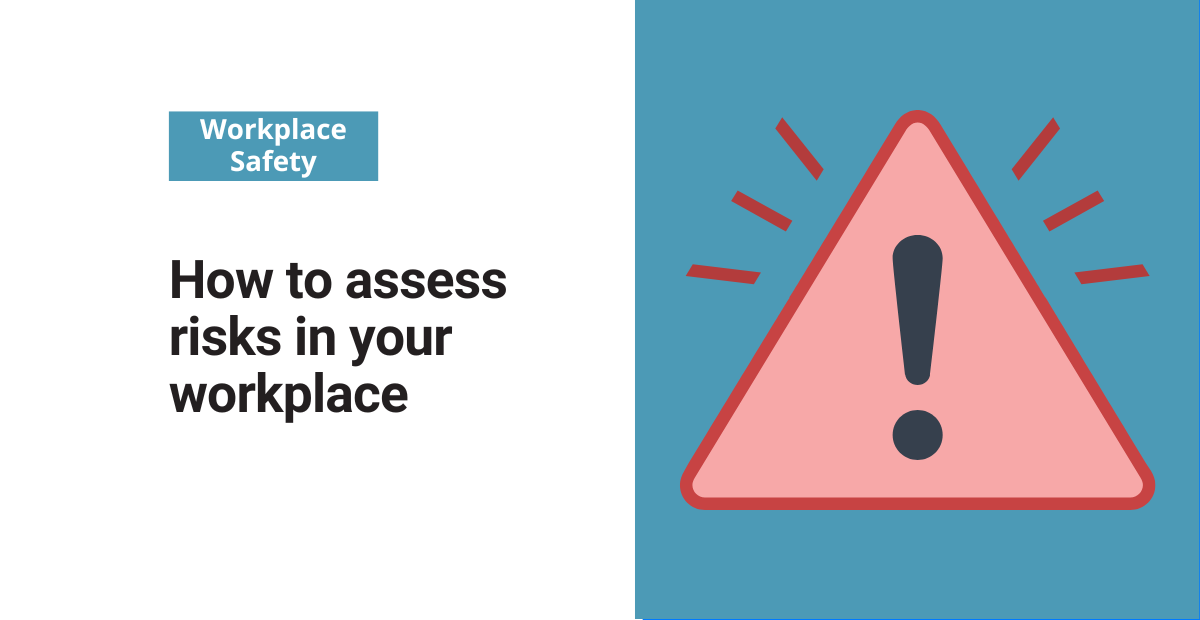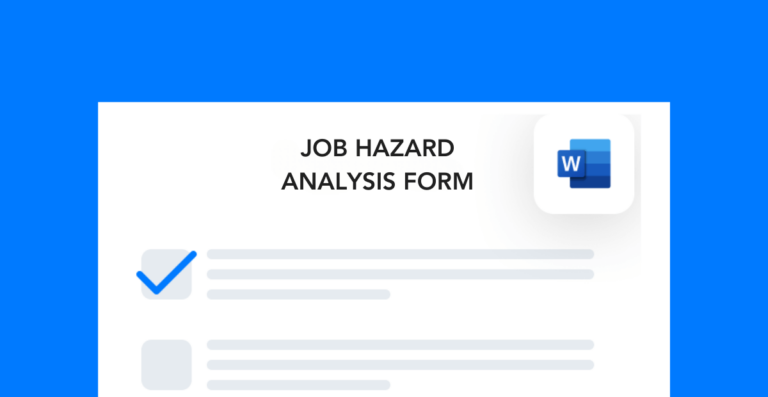Job hazard analysis (JHA) and risk assessments (RA) are two valuable processes for assessing the risks in your workplace. This guide will cover the differences between the two processes and how they help you assess the risks in your organization.
Job hazard analysis
JHA is a technique used to identify hazards specific to a job or work task and to provide hazard mitigation strategies in the form of engineering controls, administrative controls, and personal protective equipment (PPE).
The process focuses on the relationship between the worker, task, tools and equipment, and the environment. The JHA will identify controls to reduce or eliminate the hazard, so workers won’t get hurt on the job. Additionally, the JHA is a great opportunity to train employees to complete the job safely with the appropriate PPE.
Ideally, you would have employees provide input for the JHA due to their intimate knowledge of what can go wrong with the job. As a safety professional, it may be appropriate for you to develop a JHA when there are only one or a few processes that you have a complete understanding of.
However, some companies may have multiple processes at multiple sites in operation that will need subject matter experts (SME) to support JHA development. This is necessary for jobs that you may not be familiar with so lean on your team for their input. In cases that involve multiple complex processes, outside professional help may be needed such as private risk assessor consultants, insurance companies, or the local fire department.
OSHA provides a free resource in the form of a JHA booklet. This resource is particularly helpful in understanding the JHA process.
JHA preparation
You will want to do your homework before starting on a JHA. Below are three important steps to prepare for a JHA.
1. To develop a JHA, you must first start with observing the work task. Let the employee know what you are doing and why. Observe the work task from start to finish and receive input from the employee.
2. Review accident/injury / near miss history to understand which jobs are high risk. Jobs with frequent incidents usually mean there is a significant risk for injury that needs to be mitigated.
3. If you have multiple JHA to complete, rank and prioritize the jobs with the highest hazard rating. Priority should be given to jobs in which one human error could result in a severe accident or injury. Likewise, priority should also be given to new jobs to the operation or jobs that have undergone recent changes such as a process change or introduction of new equipment.
Conducting the JHA
Once you are prepared to begin the JHA, follow the steps below to conduct and define your company’s JHA process.
1. Break the job into steps. It is important to not be too general or too detailed during this process of breaking the job down into individual steps. Start with a verb such as “Turn on [name of equipment/tool]” or “Place material on the table”.
2. For each step, you will identify associated hazards. There may be one or quite a few. Ask questions like:
- What can go wrong?
- How likely is the hazard to occur?
- How can the hazard occur?
3. For each hazard, identify a solution to prevent or reduce the hazard from happening. Consider engineering controls, such as machine guards or proper lighting, and in cases where engineering controls are not possible, then implement administrative controls. Administrative controls can include training, conducting the step differently, rotating jobs, etc. If engineering and administrative controls cannot eliminate the hazard, then require PPE such as safety glasses, safety shoes, hard hat, etc.
4. Require reviews and updates either annually, if there is a near miss or incident, or if there is a change in the process, whichever occurs first.
5. Train employees. New employees must be trained before they are released to start the job. The JHA contains valuable information for the employee to complete the job safely without injury.
To ensure compliance with OSHA regulations, it’s a good idea to review regulations as they pertain to specific jobs. Reference those regulations in your JHA.
Risk assessment
As stated earlier, the primary difference between a JHA and RA is the scope. While JHA maintains a relatively narrow scope looking at a specific job, the RA is a broader analysis that encompasses the whole workplace or a projected activity and will identify and rank potential hazards.
A risk matrix scores and prioritizes the hazards and controls. The RA should have a management component to be effective as observed in the U.S. Army’s Composite Risk Management (CRM) program.
The great thing about the CRM program is that it must be understood by thousands of people. So, the Army basically produced a process that is easy to understand and implement. Despite the fact that the Army faces unique challenges that your company may never face, the principles of the program are still relevant and translatable.
Assess risks with these 5 steps
We will discuss the five steps that make up the composite risk management process.
1. Identify the hazards. As with any type of risk assessment, hazard identification is at the forefront. Consider hazards bigger in scope and relevant to the company, such as loss of revenue or customers, failure to reach an important initiative, etc. Work with your management team to highlight hazards to the company.
2. Assess the hazards. This is completed by using a risk matrix that incorporates a numerical value or a high/medium/low rating for both the probability and severity. For example, the hazard assessment for an explosion in the process may be ranked high / catastrophic for severity but low in probability.
3. Develop controls and make decisions. Work with your team to create controls that limit or reduce the hazard. For example, creating engineering controls to ensure the valve remains open to prevent an explosion.
4. Implement controls. Communicate the controls throughout the company. Train and re-train employees on these controls.
5. Supervise and evaluate. Once controls are in place and have been communicated, you can manage the CRM by evaluating the effectiveness of the controls. Ensure lessons learned are incorporated to make the process better.
Incorporate these processes to improve job safety for workers and to protect company assets.




